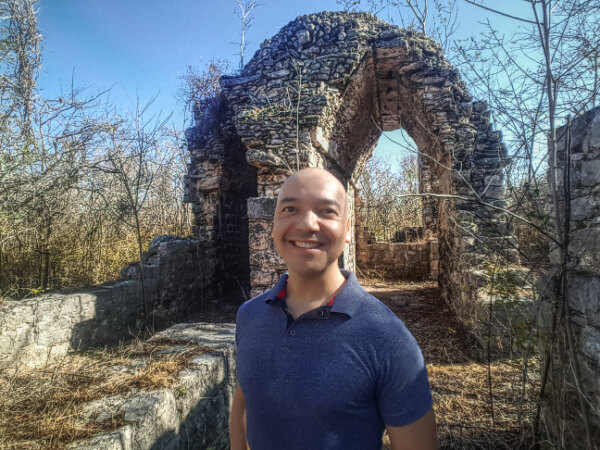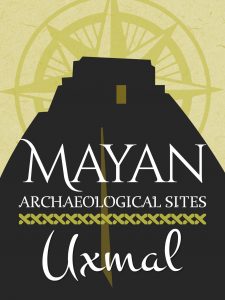
The Open Chapel in Dzibilchaltun was built at the end of the 16th century, in 1592 and continued to function until the seventeenth century.
It has a middle point arch, a half-barrel vault, a sacristy, an altar, an atrium, a room for priests and a cloister that It communicates with the cenote of Xlacah.
The most unusual thing about The Open Chapel in Dzibilchaltun is that it was built in the center of the main esplanade with the original Mayan buildings still standing. The Spaniards usually destroyed or dismantled all the prehispanic temples.
It’s impressive to see in the middle of an archaeological zone the vestiges of a
Mayan open chapels
The open chapels are the place where the Franciscans officiated the Masses in Latin and practice the evangelization of the Mayans.
They built them when they realized that the natives used to hold meetings of a religious nature in the open air and not in closed venues, such as it was catholic temples.


Physical description of the Open Chapel in Dzibilchaltun
The chancel of the chapel is enclosed on three sides by double masonry walls filled with broken stone and cancab mortar. A simple barrel-vault roofs it. There’s also a doorway leading to the apparently never completed foundations of another small room which would probably have been used as a choir or baptistry.

North of the chapel is a small rectangular structure, probably the curate’s residence. Slightly farther north are the remains of a long-thatched building where the caretaker and his family probably lived. The remains of the atrium walls are plainly visible on the north, south, and east sides of the chapel.
Santa Ursula Legend
According to another legend, Saint Ursula, a revered saint from the nearby town of Chablekal lived in the Xlacah Cenote, but later went to live in the Open Chapel.
Because of this, the Open Chapel became the church of Chablekal and the inhabitants of this town left a girl in the chapel of Dzibilchaltún, mimicking the ancient practices of sacrifices in exchange for requested favors.
The older sister of Santa Ursula still lives in the cenote and the youngest, called Concepción, also left the cenote and went to Izamal.
Location of the Open Chapel in Dzibilchaltun
The Open Chapel in Dzibilchaltun is located in the middle of the Central Plaza, right next to the Sacbe 1 that goes from the Temple of the seven dolls to the Xlakah Cenote.












